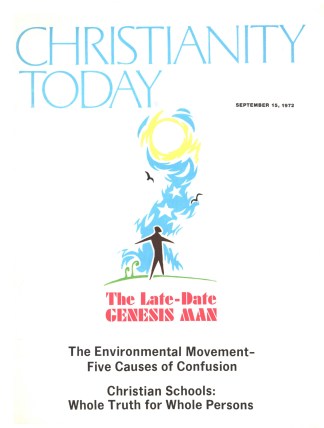The foundation of the Church is Jesus Christ. Scripture reveals him, and therefore it has been regarded by the Church as the written Word of God and held in highest esteem. The testimony of the Church to Scripture is one in which its inspiration, authority, and infallibility have been taught, and its truth-claim accepted. In recent times, however, a sustained interest in comparative religion and biblical higher criticism has challenged the truth-claim of Scripture and called into question the normative orthodox view of revelation, inspiration, authority, and infallibility. Therefore, some word must be said about the canon of Scripture and the attitude of the Church toward it over the centuries.
Iii Historical Summary
1. The canon of Scripture. Historically, which books belonged in the Old Testament and the New Testament was determined differently. In Jesus’ day, the Greek Septuagint (Old Testament) already existed and included not only the Old Testament books that Protestants generally acknowledge to be canonical but also the apocryphal books, which they do not accept. The latter were written in Greek.
The Old Testament Scripture was divided into three categories: the Law, the Prophets, and the Writings. The books of the Law and the Prophets were firmly fixed by New Testament times. But there were differences of opinion about certain of the books included in the Writings. By A.D. 90, Josephus could write that the canon of the Old Testament was fixed and unalterable and did not include the apocryphal books. It has even been asserted by some that the rabbis at the Council of Jamnia (c. A.D. 100) excluded the Apocrypha from the Old Testament canon. The Apocrypha, which the Jews did not regard as canonical, was included in Jerome’s Vulgate, although he did so reluctantly. This was generally accepted by the Church as part of Scripture from the fourth century. The Reformers, however, refused to regard the Apocrypha as Scripture since it was not included in the Hebrew canon, although it was in the Greek Septuagint. The Roman Catholic Council of Trent (1545–63) continued to include the Apocrypha as part of the canon of Old Testament.
The canon of the New Testament was fixed after a long battle. By the end of the second century, the four gospels and thirteen letters of Paul were universally regarded as Scripture, and by the end of the fourth century, the New Testament as now known was fixed, although doubts persisted about the books of Hebrews, Jude, Second Peter, Second and Third John, and the Revelation.
2. Jesus and Josephus and the Old Testament. It is certain that Jesus was familiar with the Hebrew Old Testament canon and unequivocally affirmed that its books are inspired, infallible, and authoritative. Liberal and conservative scholars alike generally agree that Jesus believed, as the Jews of his day did, that the Old Testament was inerrant and everywhere binding on men. So did the apostles of Jesus. Moreover, nothing in the gospels suggests that Jesus ever raised any questions about the truth-claims of the Old Testament.
The Jewish historian Josephus, in his treatise Contra Apionem, insisted on the inviolability of the Old Testament and did so in words that called for complete historical reliability and freedom from error. Eusebius, the church historian, quoted Josephus as believing that the Old Testament books had unique authority and sanctity, that they were to be regarded as “oracles of God,” and that they contained no discrepancies of fact.
3. The early church fathers. Once the question of the canon was settled it was almost universally believed that the books of the Bible were the infallible Word of God written. It is true that inspiration and infallibility were not pivotal issues as the Christological controversies were. Some of the early churchmen held to a mechanical dictation view of the process of inscripturation, and all of them spoke of Scripture in the highest terms and agreed that it was the ultimate source of authority.
In the Appeal to the Greeks (8, 38), the unknown author clearly accepted verbal inspiration, although he seemed to limit inspiration to that which had for its purpose the impartation of religious truths. Justin Martyr (Dialogue With Trypho, 65) held to full inspiration and authority, declaring that there are no contradictions in Scripture. Athenagoras (A Plea For the Christians, 9) believed that the writers were passive human instruments played upon by God as men play on harps. Irenaeus (Against Heresies, I, 10; III, 16; IV, 20, 34) said God came upon the writers of Scripture so that they had perfect knowledge on every subject. He called the Scriptures “perfect.” Tertullian (On Prescription Against Heretics, 22) averred that the Holy Spirit so aided the writers of Scripture “that there was nothing of which they were ignorant.”
Augustine was undoubtedly the greatest of the church fathers. Of the Scriptures he wrote (Letters of St. Augustine, LXXXII, 3):
For I confess to your Charity that I have learned to yield this respect and honour only to the canonical books of Scripture: of these alone do I most firmly believe that the authors were completely free from error. And if in these writings I am perplexed by anything which appears to me opposed to truth, I do not hesitate to suppose that either the manuscript is faulty, or the translator has not caught the meaning of what was said, or I myself have failed to understand it. As to all other writings, in reading them, however great the superiority of the authors to myself in sanctity and learning, I do not accept their teachings as true on the mere ground of the opinion being held by them; but only because they have succeeded in convincing my judgment of its truth either by means of these canonical writings themselves, or by arguments addressed to my reason. I believe, my brother, that this is your opinion as well as mine. I do not need to say that I do not suppose you to wish your books to be read like those of the prophets or of the apostles, concerning which it would be wrong to doubt that they are free from error.
4. The Roman Catholic Church. This church has consistently taught that the Bible is inspired and also that it is inerrant. The Catholic Encyclopedia (1910 edition, p. 48) says:
For the last three centuries there have been authors—theologians, exegetes, and especially apologists, such as Holden, Rohling, Lenormont, di Bartoli, and others—who maintained, with more or less confidence, that inspiration was limited to moral and dogmatic teaching, excluding everything in the Bible relating to history and the natural sciences. They think that, in this way, a whole mass of difficulties against the inerrancy of the Bible would be removed. But the Church has never ceased to protest against this attempt to restrict the inspiration of the sacred books. This is what took place when Mgr. d’Hulst, Rector of the Institut Catholique of Paris, gave a sympathetic account of this opinion in “Le Correspondent” of 25 Jan. 1893. The reply was quickly forthcoming in the Encyclical “Providentissimus Deus” of the same year. In that Encyclical Leo XIII said: “It will never be lawful to restrict inspiration to certain parts of the Holy Scriptures, or to grant that the sacred writer could have made a mistake. Nor may the opinion of those be tolerated, who, in order to get out of these difficulties, do not hesitate to suppose that Divine inspiration extends only to what touches faith and morals, on the false plea that the true meaning is sought less in what God has said than in the motive for which He has said it.” In fact, a limited inspiration contradicts Christian tradition and theological teaching.
As for the inerrancy of the inspired text it is to the Inspirer that it must finally be attributed, and it matters little if God has insured the truth of His scripture by the grace of inspiration itself, as the adherents of verbal inspiration teach, rather than by a providential assistance.
The Roman Catholic Church did not stop with biblical infallibility. It added tradition as an additional source of revelation, and the magisterium (teaching authority) of the church was used to determine the meaning of Scripture. Thus the church built upon the doctrine of the church fathers and exceeded anything they could have imagined.
5. The Reformers. The Reformation represented a return to the teachings of the apostles and prophets. The Reformers vigorously opposed tradition as a source of revelation. They had no patience with the magisterium of the Church. Sola scriptura to the Reformers meant the Bible alone, minus tradition. It left no room whatever for the Church as the final teaching authority. The universal priesthood of all believers brought interpretation of the Scripture back to the individual under the guidance of the Holy Spirit. Churches, creeds, and men were all subject to the Scripture and nothing else.
6. Warfield and liberalism. At no time during the first nineteen centuries of the Christian era did the question of inspiration and authority rack the Church as did the Christological and anthropological controversies of the early centuries when the nature of the pre-incarnate and the incarnate Christ and the Augustinian-Pelagian differences were being decided. Only from the nineteenth century on, when German higher criticism and the study of the comparative religion dominated the scene, did inspiration, infallibility, and authority become a watershed.
During the last one hundred years there have been radical departures from both Reformation and Catholic views of Scripture. In Protestantism, it was highlighted at the turn of the century by the struggle between the Princeton divines (the Hodges and Warfield) and their opponents, a key leader of whom was Charles Augustus Briggs of Union Theological Seminary in New York City. In the ensuing battle, the Presbyterian Church U.S.A. affirmed the views of Warfield, and Briggs was defrocked. The 1920s became a battlefield over biblical inspiration for Presbyterians and many other denominations. Liberalism triumphed over orthodoxy by the 1930s in America even while Europe was embracing the neo-orthodoxy of Karl Barth, whose work on Romans appeared in 1919. By the mid-1930s liberalism’s advance appeared to have been halted decisively by neo-orthodoxy, and orthodoxy itself seemed to have gained a new lease on life. In the 1940s neo-evangelicalism became a live option, but its impetus was hampered quickly when, having been established as a counterbalance to fundamentalism on the right and neo-orthodoxy and liberalism on the left, it was itself fractured by the inroads of higher criticism.
It appears that the inspiration of the Scripture will continue to be a pivotal problem for the Church at large. There is little doubt that any marked departure from the historic view of the Church on this matter leads to further heresies and finally to apostasy.










